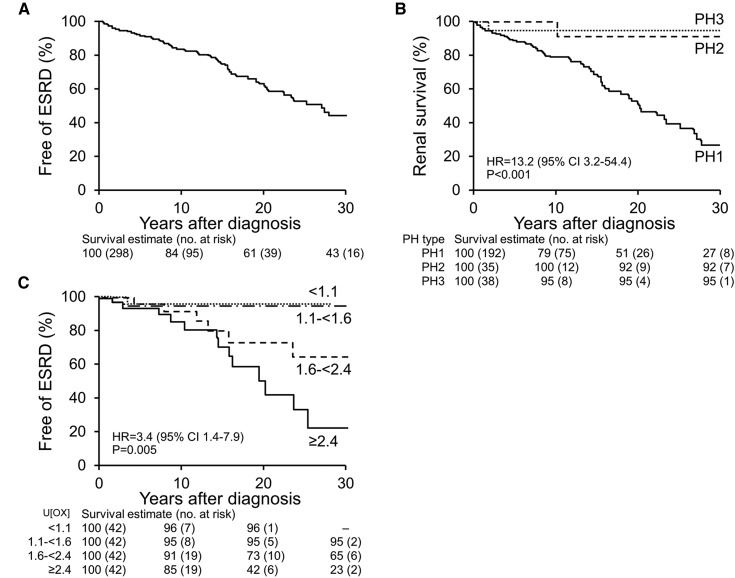Figure 2.
Kaplan–Meier plots of renal survival. (A) Among all patients with primary hyperoxaluria (PH) who did not have ESRD at diagnosis, renal survival estimates at 10, 20, and 30 years after diagnosis were 84%, 61%, and 43%, respectively. (B) Among patients with PH who did not have ESRD at diagnosis, renal survival estimates at 10, 20, and 30 years after diagnosis were lowest for primary hyperoxaluria type 1 (PH1) (hazard ratio [HR], 13.2 for PH1 versus others; 95% confidence interval [95% CI], 3.2 to 54.4). (C) Renal survival was examined by quartile of urine oxalate (U[ox]) excretion (mmol/1.73 m2/24 hours) at diagnosis. Among patients with PH who did not have ESRD at diagnosis, renal survival estimates at 10, 20, and 30 years were lowest for those with a U[ox] excretion ≥2.4 mmol/1.73 m2 per 24 hours (HR, 3.4 for quartile Q4 versus quartiles Q1–Q3; 95% CI, 1.4 to 7.9). PH2, primary hyperoxaluria type 2; PH3, primary hyperoxaluria type 3.

